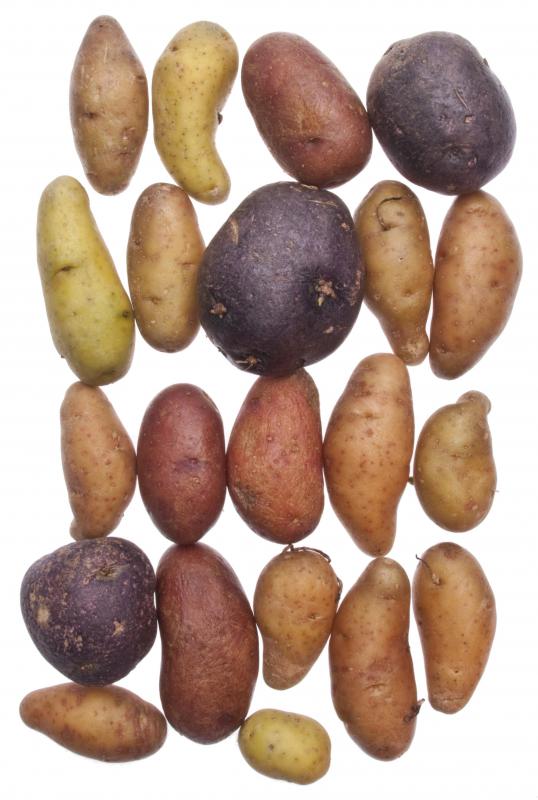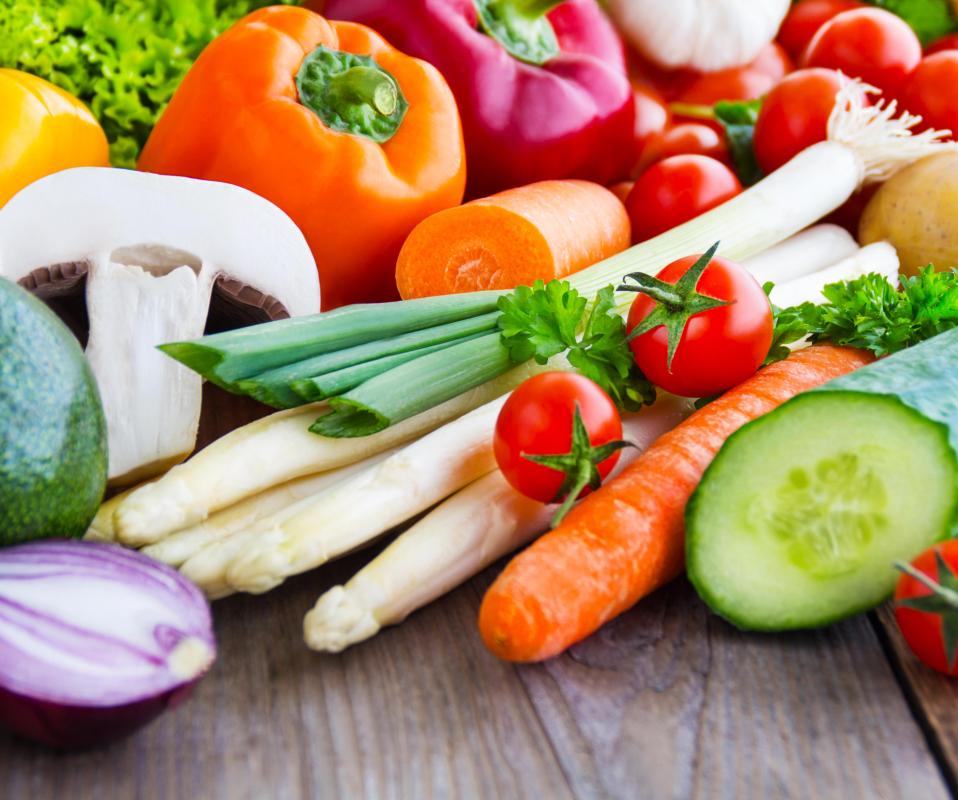At DelightedCooking, we're committed to delivering accurate, trustworthy information. Our expert-authored content is rigorously fact-checked and sourced from credible authorities. Discover how we uphold the highest standards in providing you with reliable knowledge.
What Are the Different Types of Root Vegetables?
Although most any vegetable that grows underground is frequently categorized as a root vegetable, true root vegetables include only taproots and tuberous roots. These vegetables are actual functioning roots. Bulbs, corms, rhizomes, and tubers all resemble roots, but are not actually plant roots in their own right. The difference is largely one of biological distinction, and vegetables in these classes are often lumped with true root vegetables for simplicity if nothing else.
True root vegetables are themselves the roots of plants. They grow beneath the soil, and their function is to deliver nutrients directly to the leafy greens above ground. This nutrient-carrying capacity makes the roots very healthful for humans. The roots are typically full of vitamins and minerals, and for this reason are often considered a “superfood.”
There are two categories of root vegetables: taproots and tuberous roots. Taproots include carrots, rutabagas, beets, radishes, and salsify. Vegetables in the tuberous root family include yams, sweet potatoes, ginger, and cassava.

Root-like vegetables such as potatoes, taro, arrowroot, onions, and garlic fall outside of the true root vegetable family because they do not themselves make up the root of their attached plant. All of these organisms support the nutrition of the larger plant, but they do so as outgrowths of the plant’s true roots or as stem modifications. These plants have other independent root structures that are not usually edible.

The nutrient content of these quasi-root vegetables is unchanged, however. Corms like arrowroot, rhizomes like taro, tubers like white potatoes, and vegetable bulbs like onions and garlic all serve as feeding packs of sorts for the growing plant. This means that they, like true root vegetables, are full of vitamins, minerals, and other growth-promoting substances.

Most roots and root-like vegetables are also high in carbohydrates, however. A lot of what plants need for energy is sugars and starches. Root vegetables are typically very starchy vegetables. They provide a lot of needed vitamins, but they are also quickly converted to sugar once ingested.
Nutritionists debate the value of eating heavy servings of root vegetables when other food sources are available. In the developing world, however, root vegetables are often lauded as a miracle food. The vegetables are easy to harvest and grow in almost all climates. They store well for long periods of time and do not quickly spoil. Above all else, they provide a bounty of nutrition to people who are not otherwise getting much to eat and provide far more nutrients than basic staples like rice or other grains.

There are many different ways of preparing root vegetables. Some, like carrots, can be eaten raw, but others are usually cooked before serving. Roots can be baked or grilled, roasted or fried. They can be made into soups or added to salads. There is really no wrong way to cook or serve a root vegetable.
AS FEATURED ON:
AS FEATURED ON:






















Discussion Comments
My mom loves rutabagas, but I can't stand them. Or turnips, either. Parsnips are surprisingly tasty. They kind of take on the flavor of what you cook them with, unlike carrots. Beets are nasty. But my mom eats all those vegetables. She likes them roasted in the oven. They're not for me though -- except for parsnips.
My favorite root vegetable is the jicama. I eat it raw in salads. It's extremely refreshing and great for adding a little variety to a salad. It's also packed with nutrients and has become a recent favorite of mine. I'm sold on jicamas!
I've never been much of a root vegetable eater. I like potatoes and sweet potatoes, but have never liked carrots and beets are just not good to me. I love garlic and onion, but according to the article, they are not true root vegetables. I'd rather eat a baked clove of garlic than roasted beets, though!
I really think you have to grow up eating root vegetables to really like them. I've been told celeriac is very good though, so I might try it. I'd still rather eat garlic, though. Or caramelized onions. That's good stuff.
Post your comments